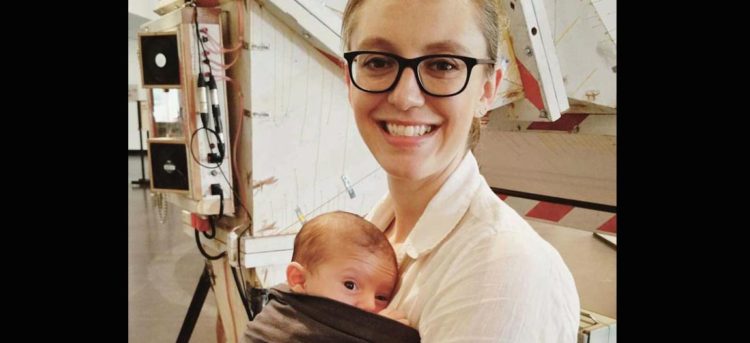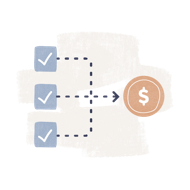Valeen Bhat recently celebrated the 10th anniversary of her company, Private Picassos, a mobile art studio that offers custom art classes, museum tours, and art birthday parties to clients across the tri-state area. A year ago, Bhat grew her business further by opening a brick-and-mortar studio and shop in Park Slope, Brooklyn. She attributes her success and ability to survive (and thrive in) the recent recession on starting small and expanding slowly.
Starting Out
Why did you start your business?
Both of my parents are actually artists, and they’re both entrepreneurs as well. I was kind of raised with that spirit from the beginning. I went to Pratt Institute here in Brooklyn where I live. I did my bachelor’s and master’s degrees in art education. I always knew I wanted to do some kind of art education, but I knew I didn’t want to work in a school because I felt that would be too limiting. After working in a few different places like early childhood centers and some museums, I decided to start doing my own private lessons on the side to see how it went. Within six months, I had a viable business.
It was very important to me personally to have a career, not just a job. I wanted to help kids create art and learn and get messy—not just do stuff that’s for the parents to hang up on the refrigerator. After having some jobs like that, I knew I didn’t want to do that. That’s why I started my company. I want to be happy with what I’m doing even if I make less money.
How did you get the funds to get going?
I started with just the very meager amount of money that I had as a 22-year-old living in New York after very expensive undergrad and grad school. Because we started as a mobile company, that helped, because we didn’t have a space with a lot of overhead. I was the only teacher in the beginning. For the first two or three years of the company, I was the only person doing everything: the accounting, designing the website, printing my own aprons, teaching all the classes, packing up art supplies …
Have you heard of business credit?
Yes. I have all of my credit in the business’ name. You can’t do that in the beginning, because no one will give you credit, for sure. But I’ve tried to keep everything in the business’ name. As soon as you can get stuff in the business name, it’s worth it, because you want that protection and you want to build up credit for the business, not just for yourself personally. That doesn’t mean that I haven’t had to personally cover some expenses over the years, though.
Managing the Business
What’s most challenging about running your business?
Finding that work-life balance. You think that if you start your own company you can work your own hours and take time off whenever you want—and you can, within reason. With that said, you don’t really get that time off. I had a baby three months ago, so that’s another thing I have to balance now. I was in the hospital about to deliver my son, running payroll on my phone!
For me, it’s helped to set boundaries for myself. After 7:00 p.m. or 8:00 p.m., I don’t swipe that widget on my phone that has my email, so I don’t even see what comes in overnight. I really don’t need to see that until the next morning. It’s hard to find the time not to think about work.
How do you finance your business to manage cash flow or growth?
Cash flow is definitely a very tricky thing for a small business. When it was just me teaching, I didn’t have to stress about it as much because I could delay paying myself if I needed to. Now that I have staff, I just try to make sure that after we get the money for a new class, for example, we pay the teacher, pay for the materials, cover any incidentals, and still have a little money left over for the business. For a lot of small businesses, it takes time to figure out how to create that buffer.
When it comes to month-to-month, you really just have to be careful and be sure you’re keeping an eye on your clients and making sure they’re paying you on time. You have to send out reminders and make sure you’re very clear about your payment policy. Once I created a system with my teachers to do this, we had a much better cash flow. When things were just sort of willy-nilly, there were situations when a client hadn’t paid us for two months and then we had to run payroll and suddenly we’re covering that.
Do you use trade credit from your vendors or suppliers?
We typically pay upfront, we’re not really big enough to pay on terms yet. In a lot of service industries or mobile industries, it’s hard to buy in enough bulk to get that big discount. We generally purchase things as we need them.
What’s the biggest mistake you made in your first years?
What I alluded to before about having a system for cash flow. The transition going from me doing everything to having a staff teach all the classes was hard. It was tricky, because I didn’t automatically know things like this client needs to pay next week or we’re out of masking tape. There was a year where we grew, but we didn’t really know how to grow. We didn’t have any systems in place, things got really disorganized, and we got really backed up on cash flow.
What’s the smartest thing you did in your first years?
Starting small, though it was a necessity for me. I quit my full-time job and decided to do only this. Three months later, the recession hit. I was just slowly growing and didn’t have a crazy small business loan that I owed money on, so that was very lucky. At the time, our bread and butter was doing private in-home art lessons. Coincidentally, many of our clients worked for big banks in New York. Come September, none of them were calling to sign up again because a lot of them had been laid off from their jobs. I quickly decided to start offering group classes and started renting out space in kids’ stores. Parents wanted classes for their kids, but maybe couldn’t afford the private classes anymore. Luckily, I wasn’t too big and didn’t have too much invested in the whole private experience. That’s what helped us pivot quickly, and that’s why we not only survived the recession, but doubled in size during the recession.
What’s the most rewarding thing about owning a business?
Knowing that everything I do is going to benefit me and my family. And knowing that I’m creating jobs for really fabulous art teachers. I’m really happy and fulfilled in my career, and I feel good knowing that I created a venue for other people to have an amazing career as well. And working with kids is fabulous, in general!
Future Plans
What does the future look like for your business?
We celebrated our 10-year anniversary in April. This coming October will be one year that our brick-and-mortar studio has been open. We plan to continue growing our studio here in Park Slope, Brooklyn and to open additional studios down the line. There’s a great synergy between the mobile business and the brick-and-mortar business, so we want to expand upon that so they’re working in tandem and we can expand further.
What advice do you have for someone starting a business?
We just started with a website and some art supplies, and we eventually added things as we grew. That’s the biggest piece of advice I would give to someone who wants to start a business—you need to start small. It’s expensive to start a business, and you don’t want to invest the dollars in a website and branding and a location and all this stuff and then realize six months later that you need to change some of it. It takes time to refine your product, even if it’s a service. It takes time to figure out your exact brand, your clientele and how to reach them, your price points … You’re not going to know that right away, even if you have an M.B.A. or you’ve worked in that industry for 30 years. Until you’re actually doing it yourself, you’re not going to know it. That’s why it was really a blessing that I started with no money to invest in all those things. I learned as I went, and I think I did it correctly because I did it based on actual experience and not just on what I thought was going to work.
More answers to pressing questions:
Business Credit Cards for Bad Credit
What Is a Good Business Credit Score?
Can I Build Business Credit Fast?
How to Shop for A Business Loan Without Hurting Your Credit Scores
This article was originally written on September 22, 2016 and updated on November 1, 2016.


Have at it! We'd love to hear from you and encourage a lively discussion among our users. Please help us keep our site clean and protect yourself. Refrain from posting overtly promotional content, and avoid disclosing personal information such as bank account or phone numbers.
Reviews Disclosure: The responses below are not provided or commissioned by the credit card, financing and service companies that appear on this site. Responses have not been reviewed, approved or otherwise endorsed by the credit card, financing and service companies and it is not their responsibility to ensure all posts and/or questions are answered.